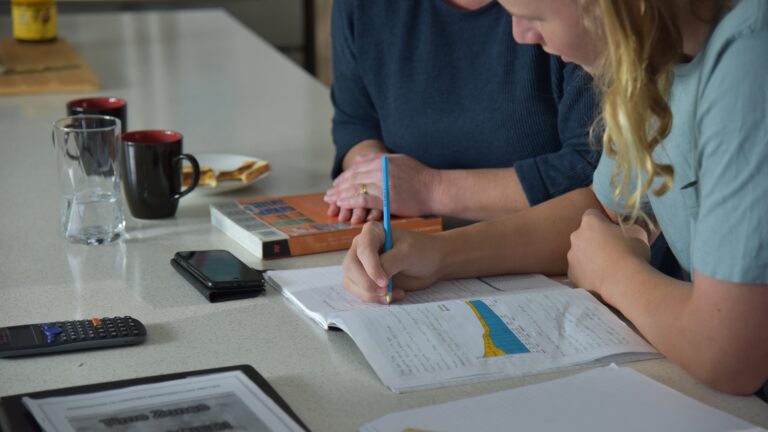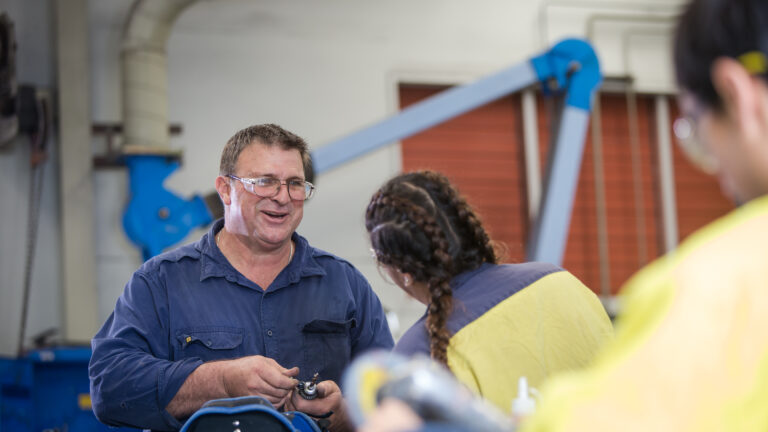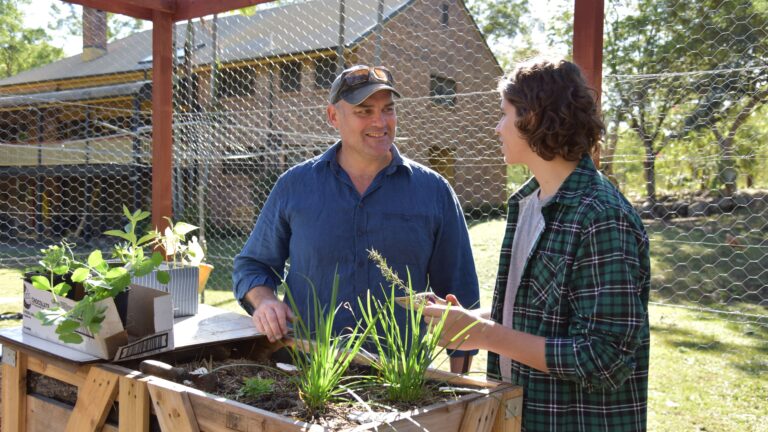Key Points
- ATAR = Australian Tertiary Admission Rank
- The ATAR indicates a student’s overall position relative to year 12 students in their current year’s graduating Queensland cohort.
- ATARs are expressed from 0 to 99.95. And, ATARs below 30 are expressed as ‘30 or less’ to students.
- The ATAR is calculated from results you achieve and it’s worth understanding how to achieve them.
- To be eligible for an ATAR, a student must successfully complete an English subject.
- An ATAR is not the only way for young people to start tertiary education, there are pathways they can take to make it happen.
- Talk to your teen’s school to help your child choose the best option for them.
Every teen is different and there are different avenues in which a student can complete their senior years at school depending on their interests, career goals, and personal learning style.
Tertiary education is one avenue students may wish to take. Some will take this opportunity straight from school, others might take it up later in life and others not at all. Ultimately, if your teen wants to study and advance their academic, research and professional skills through tertiary study, getting an ATAR is the most common pathway.
If your teen wants to have a career that requires a university degree, an Australian Tertiary Admission Rank (ATAR) will support them in this. They will need to complete the correct number and type of subjects or vocational education and training courses at school to get an ATAR. And if your teen gets an ATAR and it’s not high enough for them to gain entry to their chosen course, or doesn’t get an ATAR at all, there are still pathways they can take to help them gain entry to university.
What’s an ATAR?
- The Australian Tertiary Admission Rank (ATAR) is a national system used to rank students who want to get into university.
- An ATAR is a number from 99.95 down to 0 and it goes in steps of 0.05.
- The highest ATAR a student can achieve is 99.95, with 33 Queensland students achieving that ranking in 2022.
- The ATAR helps tertiary institutions compare the achievements of students, regardless of which subjects they’ve studied. ATAR is one component of what universities use to assess a student’s suitability to meet course eligibility requirements.
- When you apply to study a course, your ATAR is used along with other information (eligibility and merit) to determine your QTAC Selection Rank. A selection rank is the rank required for eligibility for entry into a particular course of study.
- Each tertiary institution determines the criteria used for admission into their courses – including minimum ATAR, prerequisite subjects and whether they accept alternate criteria.
Who gets an ATAR and where is it found?
All Year 12 students who meet the ATAR eligibility requirements receive an ATAR.
ATAR’s are published in late December, and for students to see their ATAR they must register and then log in to the using a personal (not a school) email address.
What does my teen need to study to get an ATAR?
Schools offer a range of general and applied subjects and vocational education and training programs and courses for your teen to choose from that can contribute to an ATAR. Your teen’s school can advise you on the right choices for your teen based on what they want to do after they finish school.
At school, students can study either general and applied subjects or a combination of both. If your teen wants to be eligible for an ATAR, they must do:
- 5 General subjects, or
- 4 General subjects, plus one Applied subject, or
- 4 General subjects, plus one VET qualification at Certificate III or above.
To be eligible for an ATAR, students must successfully complete an English subject. In addition, the following subject combination rules apply:
- Only General English subjects or Applied English subjects can be included in the ATAR, but not both.
- Only General mathematics subjects or Essential Mathematics can be included in the ATAR, but not both.
- If you complete the same Language subject (e.g. Chinese) as both an internally-assessed subject and a Senior External Examination, only one result can be included in your ATAR.
What if my teen gets a low ATAR?
Finishing school without an ATAR or a low ATAR does not mean that aspirations for tertiary study are no longer an option. If your teen gets a low ATAR or doesn’t get one at all and still wants to study at a tertiary level, there are pathways they can take to help them make it happen.
- Your teen may be able to do the same course at a different institution that requires a lower ATAR for the same type of course. Students can search the Queensland Tertiary Admissions Centre course search to find out about courses on offer.
- Some universities offer enabling programs and bridging studies where young people can study subjects that will help create a path to the course they want to study at university. Visit university websites to find out more.
- Training organisations like TAFE Queensland have certificate and diploma courses that can prepare young people for university study. For example, completing a TAFE Queensland certificate III, certificate IV, diploma, advanced diploma or associate degree will provide a teen with an ATAR equivalent ranking.
- Students who did not complete Year 12, or do not have any formal academic qualifications, can complete the Special Tertiary Admissions Test (STAT), but check the age requirement for specific institutions.
- One year of full-time study in any bachelor program can improve your QTAC Selection Rank, if your student chooses a course for the interim, they may be able to move into a program they previously didn’t have a high enough ATAR for.
- The Queensland Senior External Exam provides a Year 12-level qualification for those students who did not complete Year 12. Alternatively, students can take this exam if they do not meet pre-requisite subjects for tertiary entry.
What if my teen is struggling to stay on track at school?
If your teen is disengaging from school, there are things you can do to support them. It’s important to ensure your teen has choice and a clear role in seeking a solution. Speak to the school and be open about your concerns together, so you can all discuss the issues your teen is experiencing. You can learn more about the signs your child might be giving up on school and things you can do here.
It’s okay if your teen wants to keep their options open
Some teens are not sure whether they want to go to university or on to further training or work when they finish school. If your teen wants to keep their options open, doing a mix of school subjects and vocational education and training might be a good option for them.
Here are some examples of where students have combined school subjects with a VET course to give you an idea of how this can work, keeping in mind that every student is different and you will need to talk to your teen’s school about what pathways they offer.
What is a QCE and how is it different from an ATAR?
The Queensland Certificate of Education, or QCE as it is known for short, is the qualification Queensland students receive at the end of Year 12 if they complete enough learning while the Australian Tertiary Admission Rank (ATAR) is a national system used to give students a tertiary ranking for entry.
The QCE is awarded by the Queensland Curriculum and Assessment Authority. Students earn credits for the learning they complete from learning options, including QCAA senior syllabuses VET qualifications and many other recognised studies. They need at least 20 credits to receive the certificate, as well as meeting literacy and numeracy requirements and ensuring 1 credit is from the Core category of learning. Students earn different credits depending on what subjects, courses or qualifications they complete. There are many different pathways your teen can take to get their QCE.
Students who do not meet the QCE requirements at the end of Year 12 can continue to work towards their certificate after finishing Year 12, through the completion of additional learning such as vocational education and training courses or traineeships.
More information
Last Updated: 22 February 2024





